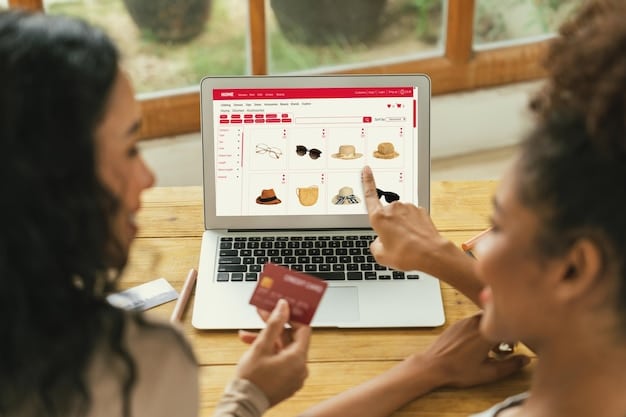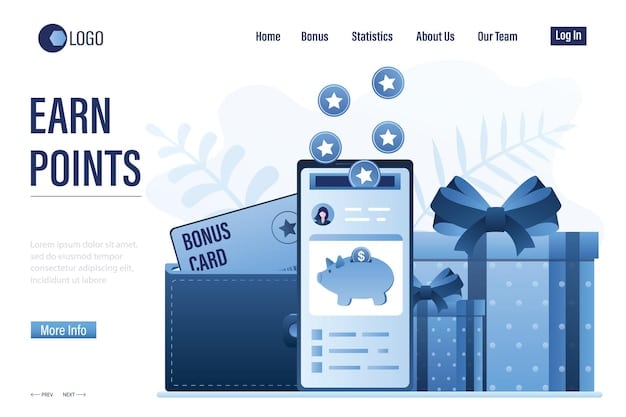Boost Customer Retention: 5 Proven Strategies to Cut Churn by 15%

Boosting customer retention is crucial for businesses aiming to reduce churn; implementing strategies such as personalized experiences, proactive support, loyalty programs, feedback analysis, and continuous improvement can significantly decrease customer churn by up to 15% in the next quarter.
Want to improve your bottom line and keep your customers happy? Boosting customer retention: 5 Proven Strategies to Reduce Churn by 15% in the Next Quarter can help you achieve just that, providing actionable steps to fortify your customer relationships.
Understand Customer Churn and Its Impact
Customer churn, the rate at which customers stop doing business with a company, is a critical metric for understanding business health. Lowering churn enhances profitability and fosters sustainable growth.
What is Customer Churn Rate?
Customer churn rate is the percentage of customers who discontinue their relationship with a company over a specific period. It is a key indicator of customer satisfaction and loyalty.
Why is Reducing Churn Important?
Reducing churn is vital for several reasons, including increased profitability, improved customer lifetime value, and enhanced brand reputation. Retaining existing customers is typically more cost-effective than acquiring new ones.
- Increased Revenue: Retained customers often spend more over time.
- Reduced Acquisition Costs: Acquiring new customers is more expensive than retaining existing ones.
- Improved Brand Loyalty: Higher retention rates indicate greater customer satisfaction and brand loyalty.
- Enhanced Marketing: Loyal customers often provide positive word-of-mouth referrals.
Customer churn severely impacts revenue and profitability. Companies that focus on reducing churn often see significant improvements in their financial performance and overall growth.
Strategy 1: Personalize the Customer Experience
Personalization creates a more engaging and tailored experience that resonates with individual customers. By understanding their preferences and needs, you can provide more relevant and valuable interactions.

Gather Customer Data
Collecting and analyzing customer data is the foundation of personalization. Use CRM systems, surveys, and analytics tools to understand customer behavior and preferences.
Implement Personalized Communication
Use customer data to create personalized email campaigns, product recommendations, and support experiences. Tailor your messaging to address individual needs and preferences.
- Segment your audience based on demographics, purchase history, and behavior.
- Craft personalized email campaigns with relevant offers and content.
- Use dynamic content to tailor website experiences to individual users.
- Provide personalized product recommendations based on past purchases and browsing history.
Personalization goes beyond just using a customer’s name. It involves understanding their unique needs and tailoring the entire experience to meet those needs, fostering loyalty and reducing churn.
Strategy 2: Provide Proactive Customer Support
Proactive support addresses potential issues before they escalate, enhancing customer satisfaction and loyalty. By anticipating customer needs, you can prevent frustration and build stronger relationships.
Identify Potential Issues
Use data analytics and customer feedback to identify common pain points and potential issues. Monitor customer interactions to detect early warning signs of dissatisfaction.
Offer Solutions Before Problems Arise
Implement proactive support channels such as chatbots, knowledge bases, and personalized tutorials. Address common issues and questions preemptively to reduce customer frustration.
- Develop a comprehensive knowledge base with answers to frequently asked questions.
- Use chatbots to provide instant support and guidance.
- Send proactive emails with helpful tips and resources.
- Offer personalized tutorials and onboarding sessions.
Proactive support is not just about solving problems; it’s about preventing them in the first place. This approach shows customers that you value their experience and are committed to their success.
Strategy 3: Create a Customer Loyalty Program
Loyalty programs reward customers for their continued business, encouraging repeat purchases and fostering brand loyalty. A well-designed program can significantly reduce churn.

Design a Rewarding Program
Create a program that offers tangible benefits such as discounts, exclusive access, and personalized rewards. Ensure the program is easy to understand and participate in.
Promote the Program Effectively
Communicate the benefits of the loyalty program through various channels, including email, social media, and in-store promotions. Highlight the value customers receive by participating.
- Offer tiered rewards based on spending or engagement levels.
- Provide exclusive discounts, early access to products, and personalized offers.
- Create a referral program that rewards customers for referring new business.
- Offer points for various actions, such as purchases, reviews, and social media engagement.
A successful loyalty program aligns with customer values and provides meaningful incentives, fostering long-term relationships and reducing the likelihood of churn.
Strategy 4: Analyze Customer Feedback Regularly
Regular analysis of customer feedback provides valuable insights into areas for improvement. By understanding customer sentiment, you can address issues and enhance the overall experience.
Collect Feedback Through Multiple Channels
Use surveys, reviews, social media monitoring, and direct feedback to gather customer opinions. Ensure you have a system in place to collect and analyze this data efficiently.
Act on the Feedback
Implement changes based on customer feedback to improve products, services, and processes. Communicate these improvements to customers to show that you value their input.
- Send out regular customer satisfaction surveys.
- Monitor social media channels for mentions and reviews.
- Analyze customer support tickets for common issues.
- Conduct focus groups to gather in-depth feedback.
Acting on customer feedback demonstrates a commitment to continuous improvement and enhances customer trust. This proactive approach can significantly reduce churn and foster stronger relationships.
Strategy 5: Continuously Improve Your Customer Service
Continuous improvement of customer service ensures that you are always meeting and exceeding customer expectations. Regular training, process optimization, and technology upgrades are essential.
Invest in Training
Provide ongoing training for customer service representatives to improve their skills and knowledge. Ensure they are equipped to handle a variety of customer inquiries and issues.
Optimize Processes
Regularly review and optimize customer service processes to improve efficiency and effectiveness. Identify bottlenecks and implement solutions to streamline the customer experience.
- Implement regular training sessions on product knowledge and customer service skills.
- Use data analytics to identify process inefficiencies.
- Adopt new technologies such as AI-powered chatbots and CRM systems.
- Regularly update customer service policies based on feedback and best practices.
Continuously improving customer service not only addresses immediate issues but also creates a culture of excellence that fosters long-term customer loyalty and reduces churn.
| Key Point | Brief Description |
|---|---|
| 💡 Personalization | Tailor experiences using customer data to meet individual needs. |
| 🛡️ Proactive Support | Address issues before they arise to boost customer satisfaction. |
| 🎁 Loyalty Program | Reward customers for continued business to foster loyalty. |
| 📊 Feedback Analysis | Analyze feedback regularly to improve products and services. |
Frequently Asked Questions (FAQ)
▼
Customer churn is the percentage of customers who stop using a company’s products or services over a given period. It is a critical metric for assessing customer loyalty and satisfaction.
▼
Customer retention is more cost-effective than customer acquisition. Retained customers tend to spend more over time and are more likely to recommend your business to others.
▼
Personalization makes customers feel valued by tailoring experiences to their individual needs and preferences, fostering a stronger connection and reducing the likelihood of churn.
▼
Proactive customer support involves addressing potential issues before they escalate, enhancing customer satisfaction and loyalty by anticipating and resolving problems preemptively.
▼
Loyalty programs reward customers for their continued business, encouraging repeat purchases and fostering brand loyalty by offering exclusive benefits and personalized incentives.
Conclusion
Boosting customer retention: 5 Proven Strategies to Reduce Churn by 15% in the Next Quarter are essential for any business focused on long-term success. By prioritizing personalization, proactive support, loyalty programs, feedback analysis, and continuous improvement, companies can significantly reduce churn and build lasting customer relationships, enhancing both profitability and brand reputation.





